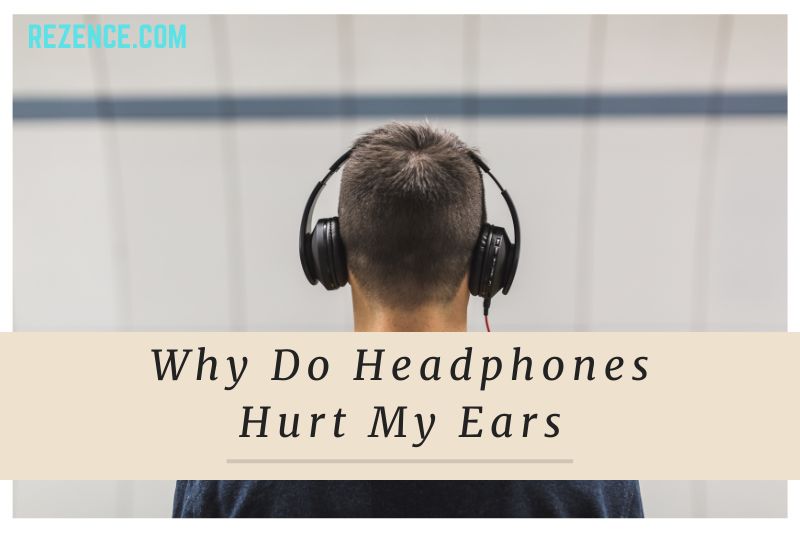Some people are more sensitive to sound than others, and some types of headphones are more likely to cause pain than others. If you’re struggling with pain from your headphones, there are a few things you can try to make them more comfortable.
Why Do Headphones Affect My Ears?
Too Tight of Headphones
Both on-ear and over-ear headphones are affected by this issue. Your headphones’ strong clamping force is the reason why they may seem “too tight” to you.
This plays a crucial role in anchoring your headphones. However, too much of it can cause severe discomfort because of the added pressure it places on your head. External compression headaches could result from this pressure if it builds up over time from repeated use.
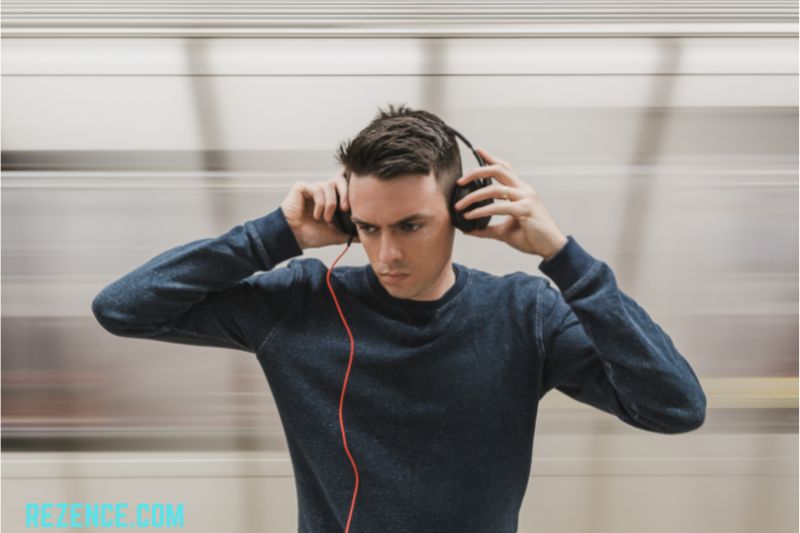
Stretch headphone out
Stretching out your headphones is the best solution if they are too tight. Follow these steps to accomplish this:
- Find something substantial to use to break in your headphones. This can be a box, a stack of books, or anything else wide and stable. Look for something roughly the same width as your head or slightly wider.
- Stretch your headphones out slowly and separate the right and left ear cups.
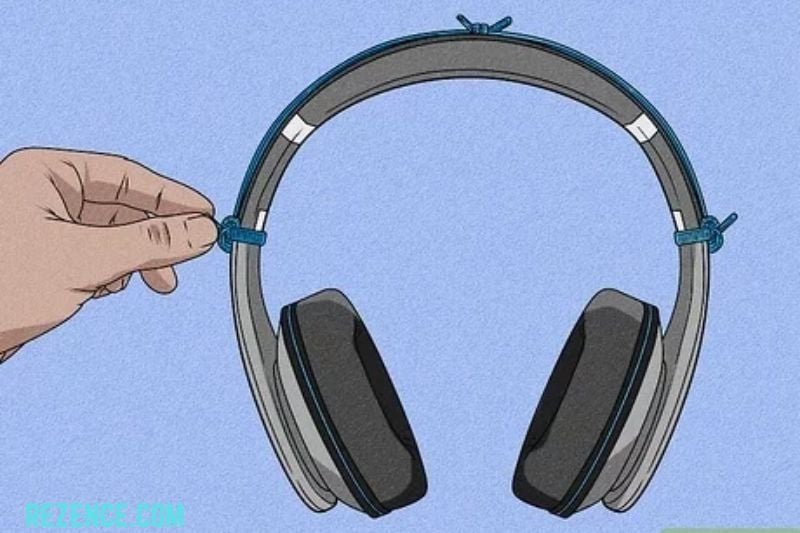
- Allow them to rest there for between 24 and 48 hours. The setting will be longer if the headband is thicker and stiffer.
- If the headphones are still uncomfortable, you can either try the same procedure again or hunt for a broader device so you can stretch the headphones even more.
Headphones Hurt My Ears
Examining customer reviews is a terrific way to identify a high-quality product. Reviews aren’t reliable, though, regarding comfort and fit.
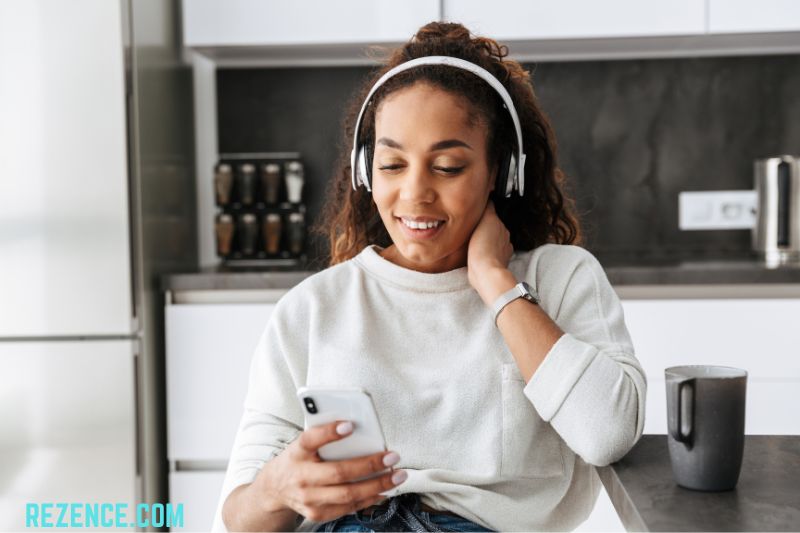
Reviews claiming that the headphones model is too uncomfortable may have been read. Another extols its coziness, nevertheless. In a sense, they are both stating the truth.
Here is a brief explanation of why do my ears hurt when i wear headphones::
Every ear is different
Most headphones on the market today are made to fit the typical ear and head sizes. In essence, the majority of headphones have universal sizing.
However, the fact that people’s heads and ears vary widely in size and shape cannot be disputed. In fact, according to research, a person’s ears are more distinctive than their fingerprints.
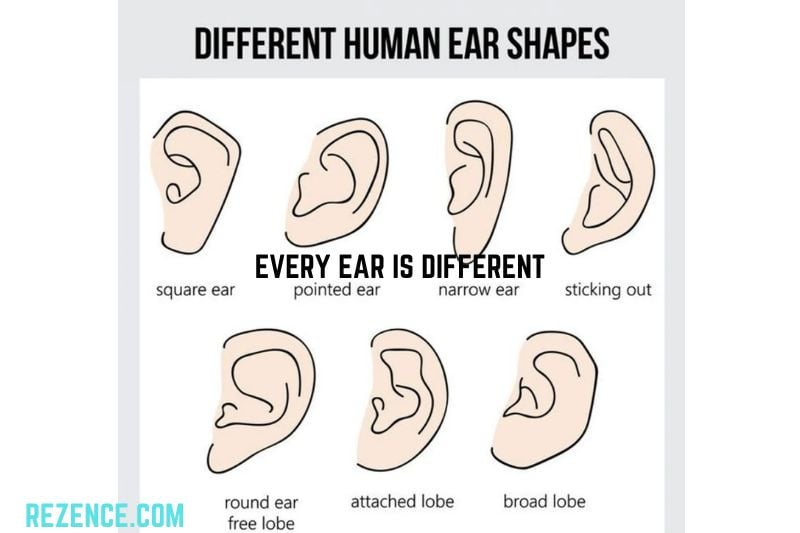
One-size-fits-all headphones will undoubtedly cause varying degrees of discomfort for people whose ears and heads differ noticeably from the current average size.
But you shouldn’t be prevented from enjoying your headphones because you have different-sized ears or heads. Take the following actions to address this:
- Discover the ideal fit
- View the adaptability of headphones
- Put on your headphones correctly.
Discover the ideal fit
Nothing beats testing the headphones on for size in person.
As much as possible, try the headphones on rather than just perusing the internet. Consider how they fit, how they feel, and whether you would be willing to wear them for a lengthy period.

See headphones’ adjustability
Adjustable components were a strategy used by manufacturers to overcome this problem with their headphones. Don’t forget to gradually adjust your headphones to notice how the fit and comfort change.
The following customizable features to know how to reduce ear pain from headphones:
- Earcup rotation – By allowing users to rotate the ear cups to fit their facial features, rotating ear cups improve the comfort of the headphones.
- Adjustable headbands typically have sliding hinges that extend them so that users can position the headphones to fit their heads.
- Replaceable components: The headband, headband padding, ear pads, and sliders are all replaceable components for headphones. Users can quickly personalize their headphones to suit their tastes thanks to headphones with removable parts. Therefore, it could be wise to spend money on replacement parts if the rotating ear cups and adjustable headband aren’t resolving the problem.
Put on your headphones correctly
Occasionally, the issue is mere with the way you’re wearing your headphones.
Not all headphones should be worn in the same manner. One approach to keep your headphones from hurting your ears is to know how to wear them properly. Additionally, this helps to enhance the overall sound quality of your headphones.
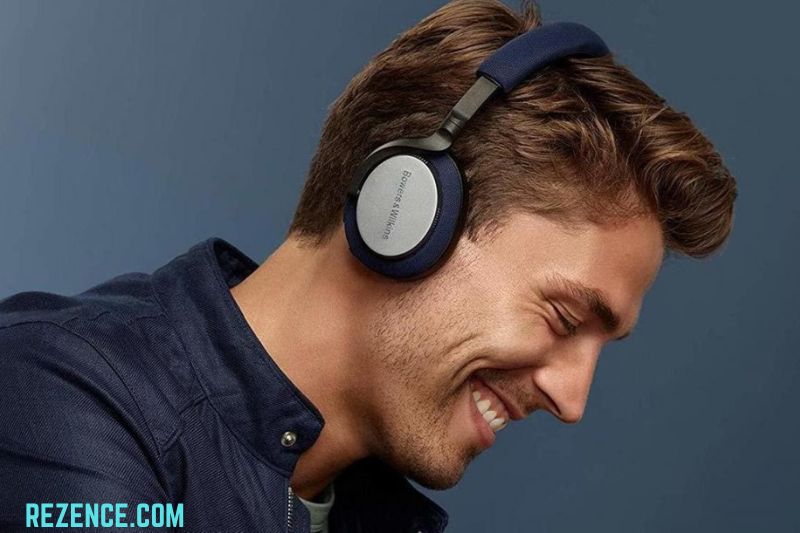
The Top of My Head Hurts from Headphones
There are a number of reasons why wearing headphones may make the top of your head hurt. Here are two of them:
- Low clamping force – As was previously mentioned, using too much clamping force can cause ear damage. On the other hand, getting too little of it might also make your head hurt. This is due to the fact that headphone fittings that are excessively lose cause the headband to sit very firmly on the user’s top of the head.
- Headband Padding – The demand for a thicker headband padding grows as the clamping force of the headphones diminishes, and vice versa. Consequently, inadequate padding may result in soreness on the top of your head.
Your head is subjected to an even distribution of pressure thanks to solid, thick padding.
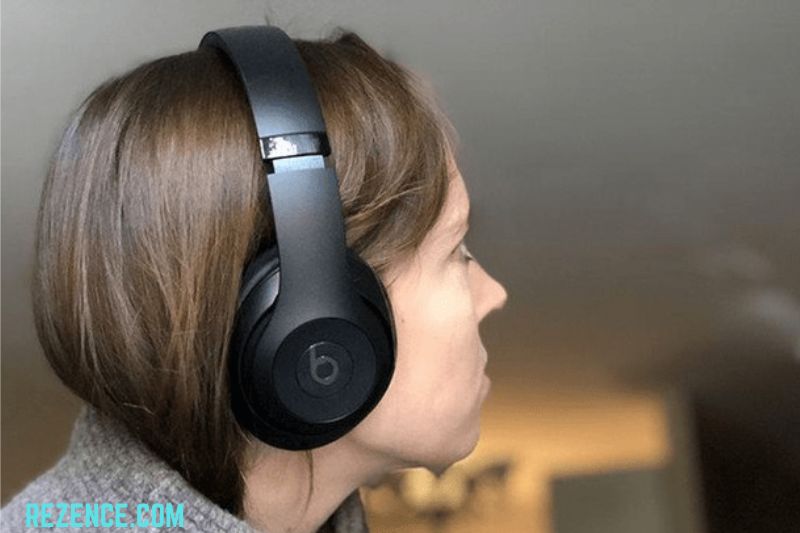
The measures you can take to solve this issue are as follows:
- Tighten the earbuds.
- bolstered headband padding
Tighten the earbuds
You can tighten your headphones using a simple approach if they feel too loose while you wear them. Here is how to accomplish it:
- Look around for something sturdy that can hold your headphones in place. Select one whose width is smaller than the size of your head.
- Pull one earcup carefully apart from the other earcup. Place the object of your choice over the headphones.
- Tie a rope, cord, or cable tightly after wrapping it around the headphones. A strong elastic band is an additional option.
- Give the headphones at least 24 hours to settle. Repeat the technique and give the headphones another 24 hours to settle if they still feel floppy after that. Repeat the previous steps until your headphones are the appropriate tightness.
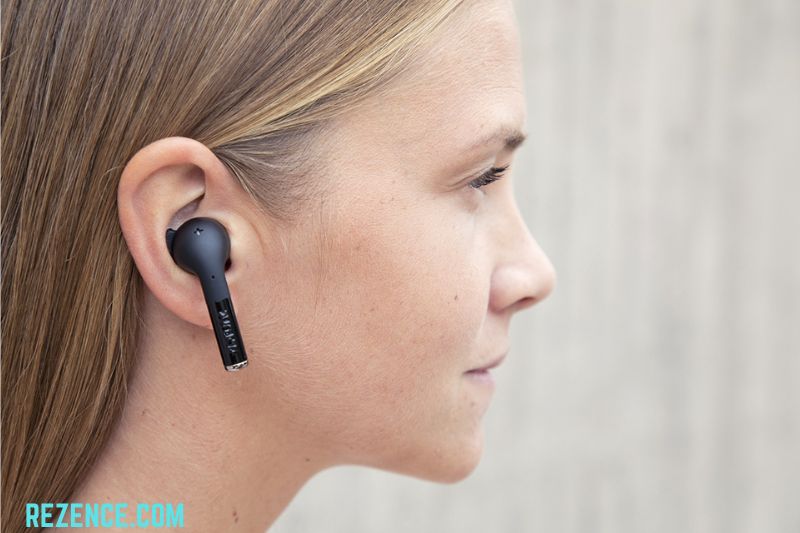
Upgrade headband padding
You might need to replace the padding on your headband if the discomfort keeps happening.
There are two approaches to this. Put on your DIY cap and create amusing but inexpensive headphone cushioning. Or you could just decide to purchase ready-made substitutes.
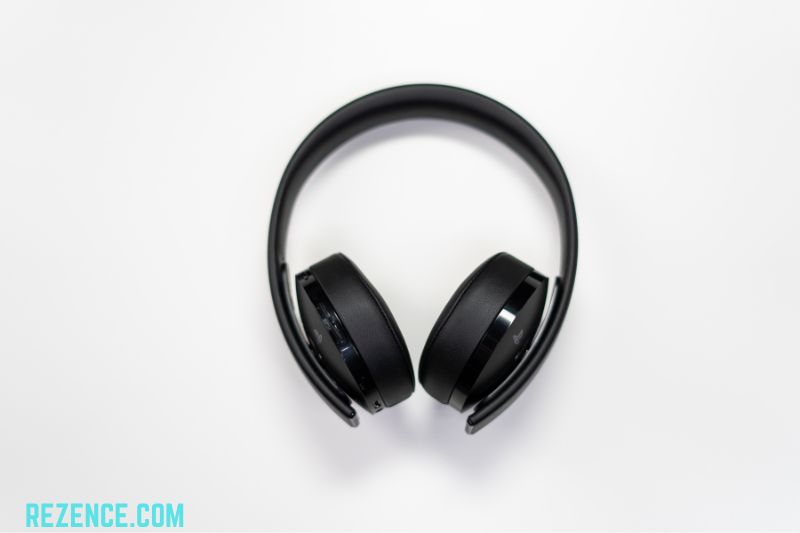
However, ready-made replacement headband paddings are fantastic possibilities if you’re not much of a DIY person and you’re looking for a quick and convenient remedy.
Follow these instructions to replace the padding on the headband of your headphones:
- Look for quality cushions for replacements. Verify that the replacement headband padding’s size fits your headphones. TXEsign provides high-quality universal replacement headband paddings that work with most headphones if you’re unsure of what to choose. They are constructed from premium materials, including lycra, microfiber, and neoprene. Additionally, their strong zipper closures make installs a breeze.
- Your headphones’ previous headband padding should be removed. Keep in mind that some headband paddings can be taken off more easily than others.
- Refer to this YouTube tutorial for help removing headband paddings that are more difficult.
Install the new headband pads after removing the outdated padding. Since most paddings have zippers, installation is usually simple. Further modifications might be required if the padding on your new headband is made differently.
My Ear Cartilage Is Hurt by Headphones
Lack of support is caused by earcup cushioning that is too thin. And finally damages the cartilage in your ears. Users with erect ears are more likely to experience this. The reason for this is that headphone drivers frequently rub against them.
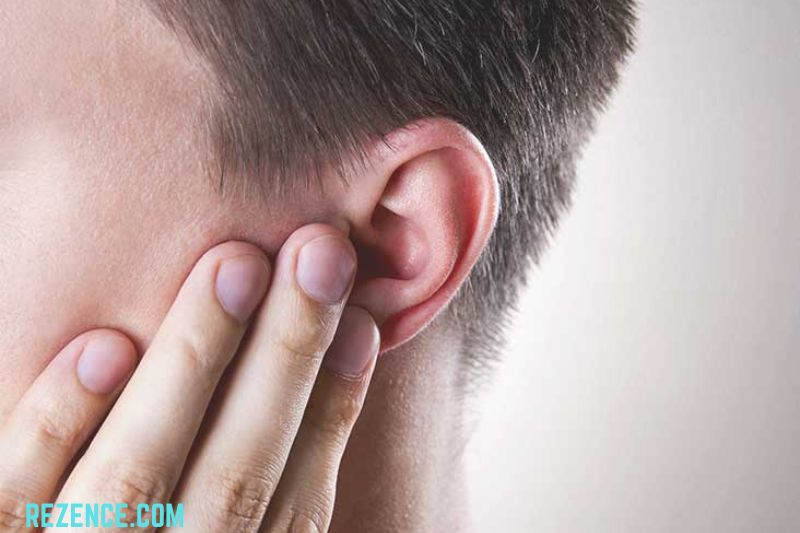
This sustained tension exposure can make hearing painful and uncomfortable. In the worst circumstances, this may also cause skin inflammation and scrapes.
What you can do to solve the issue is as follows:
Increase the ear cup cushioning
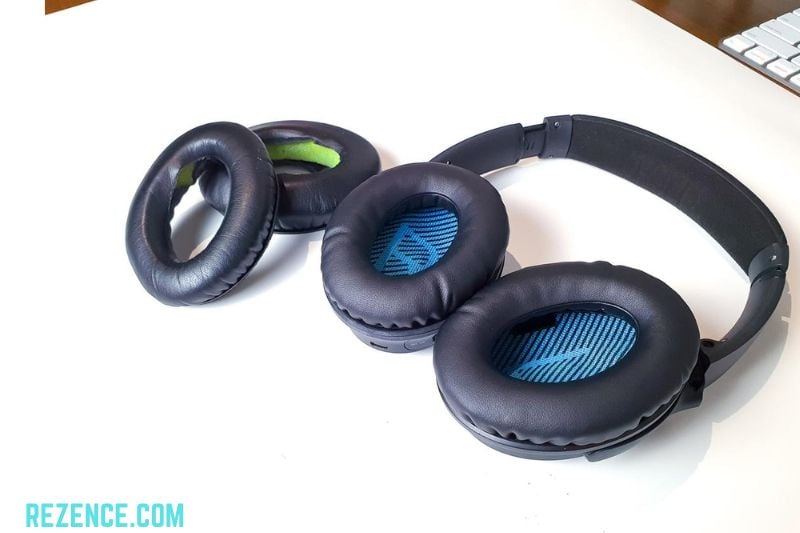
Ear cup paddings protect the ear by cushioning it. It may be possible to solve the issue of headphones damaging your ear cartilage by replacing them with thicker ones.
Following are some tips for finding replacement ear cup paddings:
- From the manufacturers – Choose replacement ear cup pads that are specifically offered by the maker of your headphones to ensure complete compatibility. The second best choice, if they don’t sell replacement ear cup pads, is to look for other producers.
- The replacement ear cup pads should match your existing one’s size and shape, so be sure to check before you buy them. By searching up the model and dimensions of your headphones, you can find ear cup pads that fit them.
- The material you choose will affect the ear cup’s level of breathability, durability, and even sound quality. But choose ear cup paddings made of leather, velour, or microfiber for the most comfort.
Depending on your preferred replacement and headphone models, there are several different ways to replace ear cup paddings. You can refer to this helpful tutorial for a comprehensive explanation of how to change your headphone pads.
After Wearing Headphones, My Inner Ear Hurts
Due to the fact that earbuds and IEMs are designed to fit closer to the inner ear, users frequently experience this issue.
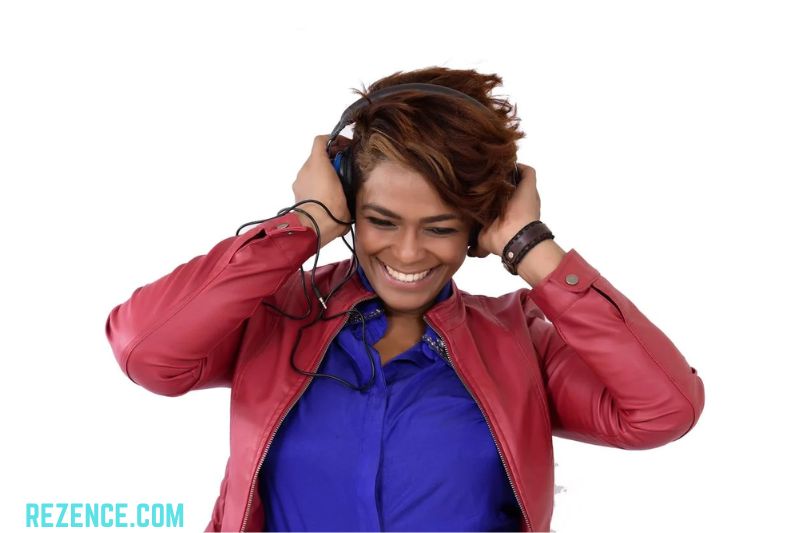
The following are some of the most typical causes of this:
- The in-ears are too deeply implanted – Your inner ears may become injured if your earbuds or IEMs are inserted too deeply. When the earbuds or IEMs are placed a bit too close to the eardrums, the vibrations they produce can be painful.
- Incorrect ear tip sizing – This has an impact on more than just the sound and noise-canceling capabilities of the headphones. Additionally, it can be painful and uncomfortable, particularly if the ear tips are too big for the ear holes.
- Too much time spent using headphones can make the listener fatigued. Additionally, earbuds and ear tips aren’t exactly made to fit in the ears for extended periods of time. IEMs and earbuds may be initially tolerated by the ears, but prolonged usage of these accessories might damage the cartilage in your ears.
What you can do to solve the issue is as follows:
- Discover the ideal ear tips.
- Rest your ears.
Discover the ideal ear tips
When selecting the ideal ear tips, ear tip material is just as important as ear tip size. Even though silicone ear tips are the most common, memory foam ear tips are your best bet.
It is strongly advised to use Comply Isolation Plus Tx-500 Memory Foam Tips. These ear tips are made to fit snugly, blocking out ambient noise and encouraging an immersive listening experience. Additionally, WaxGuard is included to assist prevent earwax from getting near the nozzle of the earphones.
Rest your ears
Just as much as our bodies need to relax, so do our ears. You could get ear pain and soreness from listening fatigue if you wear headphones a lot and for a long time.
Following are a few of the most typical reasons for listening fatigue:
- Sensory overload is brought on by excessive audio stimulation.
- long-term use of headphones
- Increasing the loudness of headphone audio to dangerously high levels
Long-term exposure to loud noises can result in acquired hearing loss in addition to listening fatigue.
The National Health System (NHS) advises at least 18 hours of quiet time to prevent them. Your ears will be able to rest after being exposed to strong sounds for a while, thanks to this audio break.
My Ears Itch from Earbuds
More often than you may imagine, headphones—especially the earbud varieties—cause itchy ears. However, the true culprits here are not headphones. However, it’s still important to note because it influences how consumers listen.
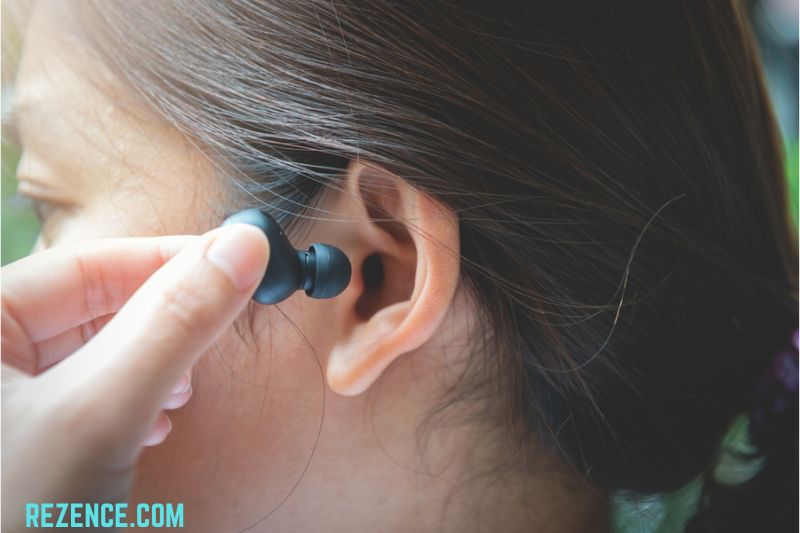
Your earphones may scratch your ears for a variety of reasons. Some of the most typical causes are listed below:
- Wax accumulation – According to Dr. Abramowitz, wearing earphones does not always cause the body to produce more earwax. The restricted airflow that results from the earbuds’ design, which seals off the ear canal from the outer ears, might, however, result in earwax buildup.
- Everyone’s ear canals contain wax and germs, which can lead to ear infections. Whether you have earbuds in or not, this is true. But those who do wear earphones are more likely to develop ear infections.
- Allergic reactions – In some cases, putting something alien (such as earbuds, hearing aids, etc.) inside your ears might lead to a rash. Contact dermatitis is the name of this condition.
What you can do to solve the issue is as follows:
- Clean up after your headphones.
- Do not exchange earbuds.
- Examine your allergies
Clean up after your headphones.
All people need to practice good hygiene. To avoid this, always check the ear cups or ear tips of your headphones for any wax or debris accumulation.
Follow these instructions to clean the ear tips of your headphones:
- Remove the foam/silicone ear tips from your headphones.
- To clear the wire mesh in the ear tip of any dirt or earwax that may have accumulated in it, gently scrape it with a soft toothbrush.
- To remove part of the debris, gently but firmly tap the other side of the ear tip.
- Use isopropyl alcohol or a disinfectant spray to lightly dampen a clean cloth.
- With the towel, carefully wipe the ear tip.
- To clean the opposite ear tip, repeat the previous procedure.
Do not exchange earbuds
Sharing earphones not only promotes poor hygiene but also poses a risk to your general ear health. In fact, a study found that using earbuds might increase the number of bacteria in the ear canal by an astonishing 11 times.
It’s possible to infect your ear canal with new microorganisms when you share your headphones with others. This may cause an excessive buildup of bacteria inside your ears. If this occurs, an ear infection is probably what will ensue.
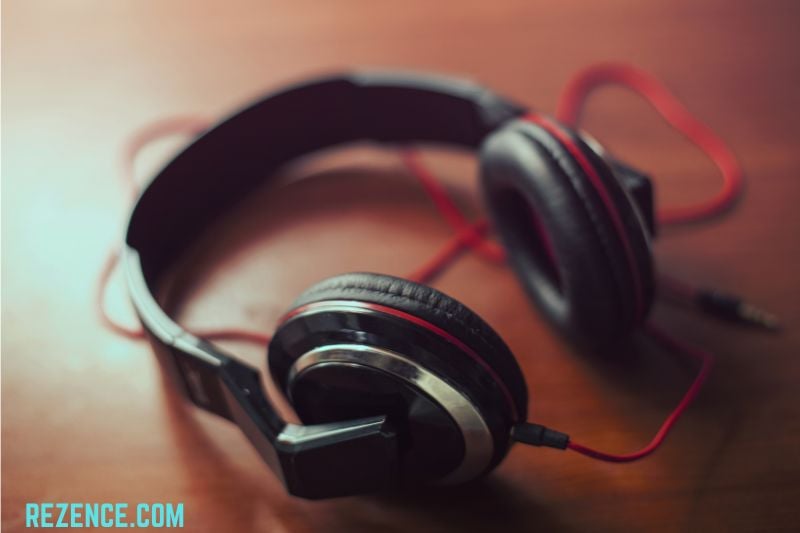
What if I have to share?
There are instances in which sharing headphones is unavoidable. Then, what would you do? Simply keep disposable headphone covers ready for these scenarios before lending your headphones to a buddy in need.
Examine your allergies
The skin condition known as allergic contact dermatitis may be to blame if you experience any itchiness, redness, or swelling in the region surrounding your ears.
Today’s headphones are often comprised of plastic and rubber. Unbeknownst to some, allergens are frequently found in rubber and plastic materials. Always be sure to be checked out if you experience any itching near your ears.
My Ears Get Too Hot
A good seal is one of a decent set of headphones’ most crucial characteristics. This is due to the fact that a sound seal amplifies the bass and enhances its noise-canceling capabilities.
However, tight-sealing headphones are not without their drawbacks. Headphones that are tightly sealed prevent airflow and accumulate heat. When worn throughout the warmer months of the year, this may make the ears heated and perspiring.
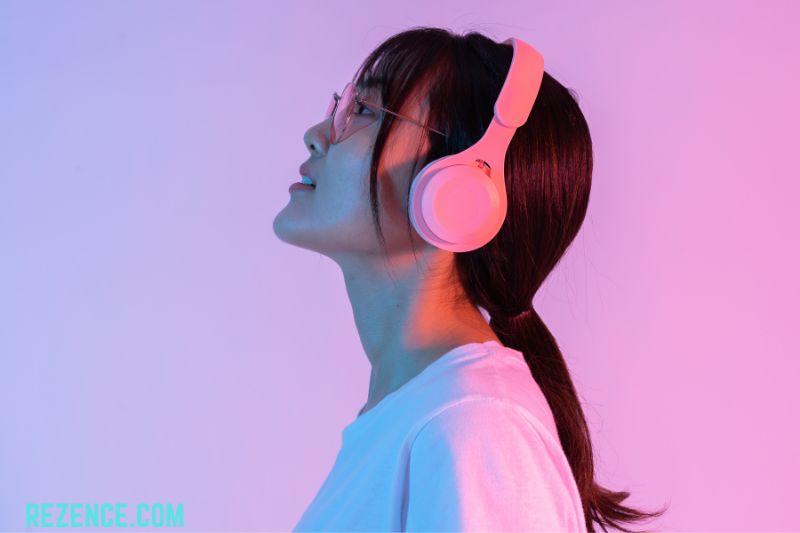
A breathable earcup
Because of their sealing qualities, ear cups have limited ventilation if your ears become overheated when wearing headphones. The overall breathability of the headphones is significantly influenced by the earcup material and clamping force.
Which ear cup cushioning material is the best overall is still up for dispute. But when it comes to ear cup breathability, the discussion is over. The best padding is still made of fabric.
Try shopping for ear cups made of velour if you want more breathable ear cup cushioning. A material that resembles velvet is called velour. In addition to being breathable, this material is also incredibly strong.
But keep in mind that the paddings allow in more air, the more breathable they are. Your headphones’ ability to block out noise and provide high-quality sound will be impacted by this.
Headphones Make My Glasses Dig to My Head
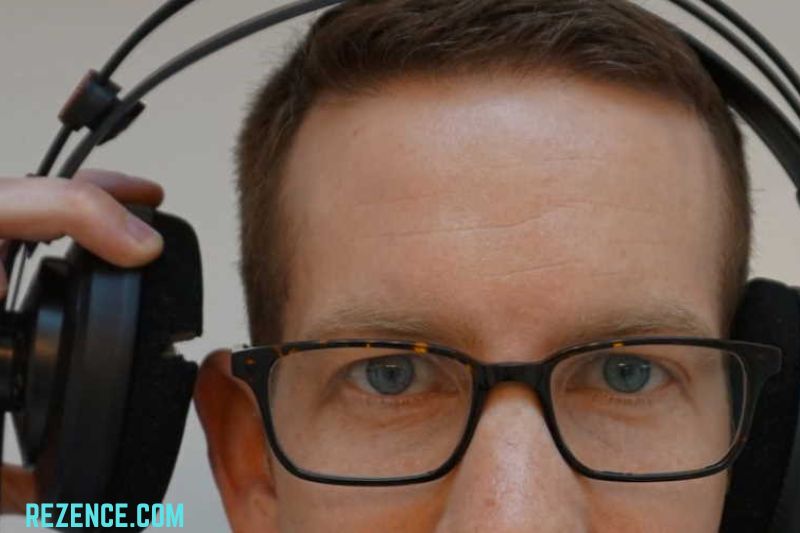
People who wear both glasses and headphones simultaneously are the only ones who can truly understand the anguish and discomfort caused by improperly fitting headphones. If this describes you, you’ll be able to relate to the following:
- When you take off your spectacles, the temples leave unattractive marks on your face.
- Your spectacles are under pressure from the clamping force of your headphones.
- Sometimes, you might experience a squeezing sensation in your face.
DIY Remedies for Ear Pain Caused by Headphone or Earbud Use
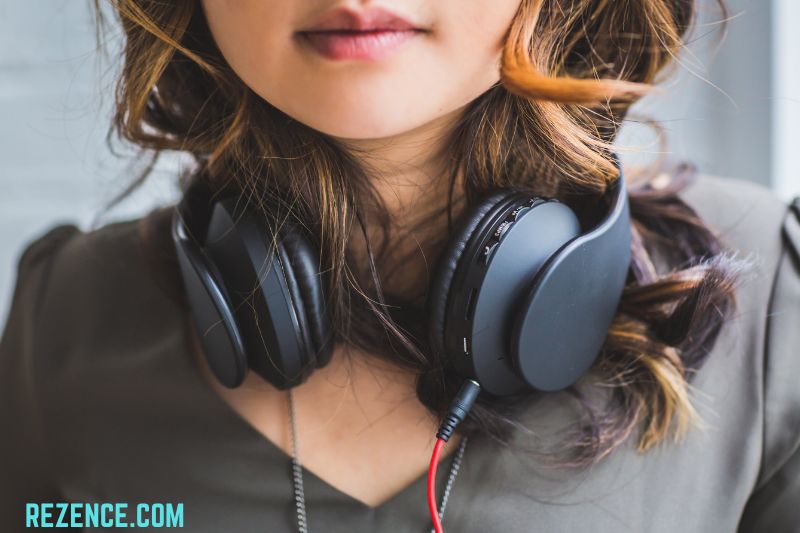
Depending on the kind and severity of the issue, there are a variety of home treatments for ear discomfort. Simple steps like these could be used as solutions:
- Decreasing the strain on your ears by adjusting the earphones
- Taking off the earbuds or headphones for a while can reduce hearing loss.
- Lowering the volume to no more than 60% of its maximum and only using the gadgets for no more than an hour at a time
- If it doesn’t clash with any other prescriptions being used, taking a suitable over-the-counter oral painkiller
- If there is no underlying ear illness, use over-the-counter ear drops with pain-relieving indications.
How to Help Prevent Ear Pain From Wearing Earbuds or Headphones
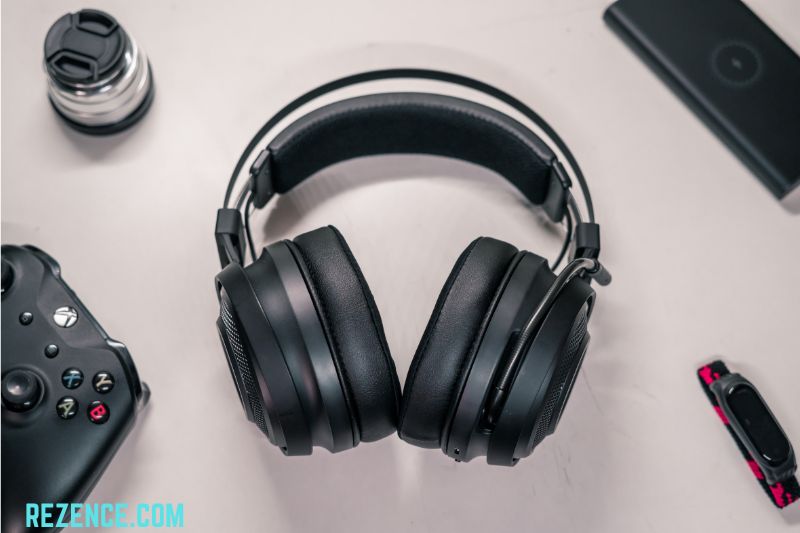
- Utilize a dry, lint-free, nonabrasive cloth to clean the gadgets.
- As previously stated, keep the volume at 60 percent or less of the highest setting.
- Make sure your headphones are comfortable and snugly fit around your ears.
- Avoid using earbuds or headphones for long periods of time; instead, take periodic pauses.
- To prevent earwax buildup, schedule routine ear exams that include expert cleanings.
- If you can, replace the earpads on your headphones with ones made of a different material to alleviate an allergic reaction.
- Before starting the sound source or putting on the earphones or earbuds, make sure the volume is already at the lowest level.
Tips on Choosing Comfortable Headphones
If you’re still having trouble with uncomfortable headphones, investing in a new set might be the best course of action.
The most important considerations when purchasing headphones are your comfort and convenience. Even if you get the most expensive headphones available, you won’t receive your money’s worth if they don’t fit you comfortably.
Weight
In contrast to heavier headphones, lighter ones won’t put too much pressure on your head. Even if you plan to use them for a long time, they can provide you with comfort that lasts.
But lighter doesn’t automatically equate to better. You can get headphones that are a bit heavier and still maintain comfort. Just make sure to pick one with enough padding to offer adequate head and ear support. And equally spread the weight of the headphones.
Clamping Pressure
Using a specialized weighing scale, you can gauge the clamping force of the headphones. However, since everyone has a different head shape, this one is more of a personal preference.
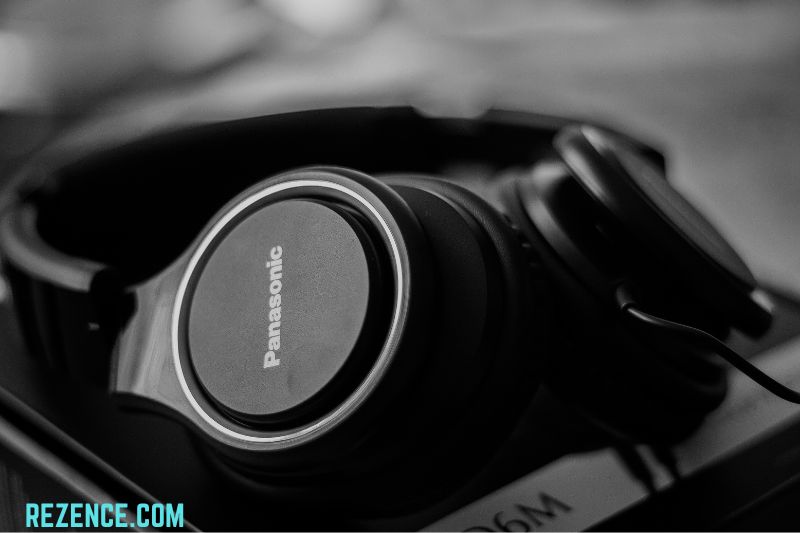
If the headphones don’t feel too loose or too tight when worn, the clamping force is appropriate for your head size and shape.
Padding
The optimal headband and ear cup paddings for over-ear and on-ear headphones are those that feel substantial, smooth, packed, and even. They shouldn’t feel thin or wrinkled, as these characteristics make paddings more flimsy.
Real leather padding is the most durable and breathable option for cushions. Velour and microfiber versions are also excellent choices.
Size of the ear cup and tip
Ear cups: For over-ear headphone users’ maximum comfort, ear cups that don’t sit too shallowly on the ears are advised. Deep ear cups provide greater stability and keep the headphones’ drivers from scraping against the ears and causing irritation. Additionally, the size of the ear cups should increase with the size of the ears.
Ear tips: The ear tips for IEM and earbud users should also be perfectly comfortable. You should select ear tips that are the proper size for your ears because IEMs fit straight into the ear canal. If you wear earbuds, pick a size that fits your concha comfortably.
Adjustability
The better the headphones are, the more customizable pieces they have. With these headphones, you have additional flexibility to change the fit and position of the headphones to better suit your features. In general, the more the headphones can be customized to suit your preferences, the better.
FAQs
How can I increase the comfort of my headphones?
Take some foam or other cushioning and tuck it all the way under the ear pad of your headphones to increase comfort. The pad’s thickness should rise. As a result, giving your ears additional room inside the cup. I used a backer rod, but you could also use cotton balls or something a little softer.
How many hours a day should headphones be worn?
According to Dr. Foy, you should only listen to MP3 players for a total of 60 minutes per day at volumes no higher than 60% of their maximum settings. “Your duration should be shortened the louder the volume. You should only listen at maximum volume for around five minutes every day.
Are over-ear headphones preferable to on-ear models?
On-Ear vs. Over-Ear Headphones: Over-Ear headphones are second best at passive isolation, blocking a respectable amount of background noise without the need for active cancellation. On the other hand, on-ear headphones don’t work as well. The smaller ear cups typically used rest on the ears and don’t always provide a good seal.
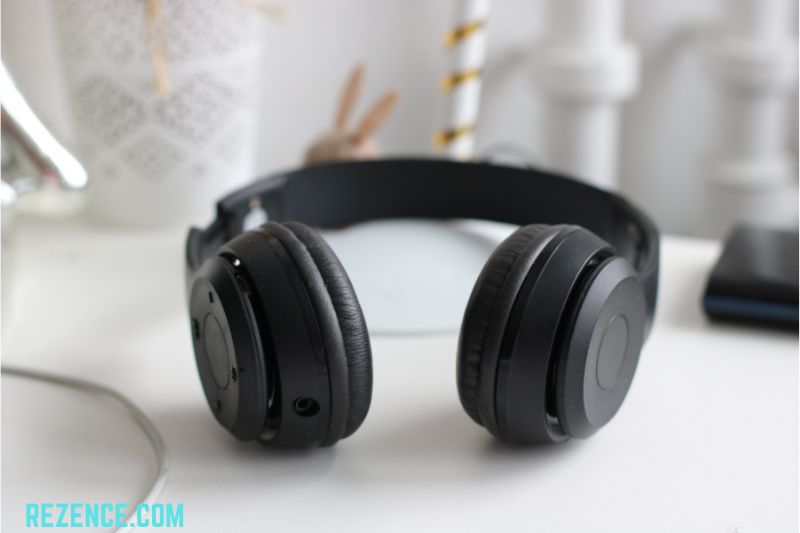
What occurs if you overuse headphones?
If you use over-the-ear headphones for an extended period of time or listen to loud music, you could end up damaging your hearing. Having the sound source inside your ear canal can boost the level of a sound by 6 to 9 decibels, which is enough to cause some major difficulties. However, they don’t pose the same risk as earbuds do.
Conclusion
There are a few possible reasons why do my ears hurt when i wear earbuds. It could be that the headphones are too tight or that they’re not positioned properly in your ear. It’s also possible that you’re listening to music that’s too loud, which can damage your hearing over time. If you’re experiencing pain while wearing headphones, it’s best to consult a doctor or audiologist to find out the cause.
Read also: Can You Wear Headphones In A Casino: Full Guide In 2022

